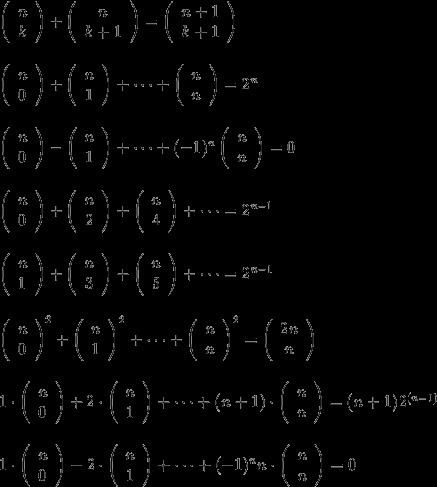The binomial differential equation is the ordinary differential equation
( y ′ ) m = f ( x , y ) , when
m is a natural number (i.e., a positive integer), and
f ( x , y ) is a polynomial in two variables (i.e., a bivariate polynomial).
Let P ( x , y ) = ( x + y ) k = ∑ j = 0 k ( k j ) x j y k − j be a polynomial in two variables of order k ; where k is a positive integer. The binomial differential equation becomes ( y ′ ) m = ( x + y ) k ; using the substitution v = x + y , we get that v ′ = 1 + y ′ , therefore ( v ′ − 1 ) m = v k or we can write v ′ = 1 + v k m , which is a separable ordinary differential equation, hence
d v d x = 1 + v k m ⇒ d v 1 + v k m = d x ⇒ ∫ d v 1 + v k m = x + C .
Special cases:
- If m = k , we have the differential equation v ′ − 1 = v and the solution is y ( x ) = C e x − x − 1 , where C is a constant.
- If m | k , i.e., m divides k so that there is a positive integer n such that k = n m , then the solution has the form ∫ d v 1 + v n = x + C . From the tables book of Gradshteyn and Ryzhik we found that
∫ d v 1 + v n = { − 2 n ∑ i = 0 n 2 − 1 P i cos ( 2 i + 1 n π ) + 2 n ∑ i = 0 n 2 − 1 Q i sin ( 2 i + 1 n π ) , n : e v e n i n t e g e r 1 n ln ( 1 + v ) − 2 n ∑ i = 0 n − 3 2 P i cos ( 2 i + 1 n π ) + 2 n ∑ i = 0 n − 3 2 Q i sin ( 2 i + 1 n π ) , n : o d d i n t e g e r
and
P i = 1 2 ln ( v 2 − 2 v cos ( 2 i + 1 n π ) + 1 ) ,
Q i = arctan ( v − cos ( 2 i + 1 n π ) sin ( 2 i + 1 n π ) ) .

